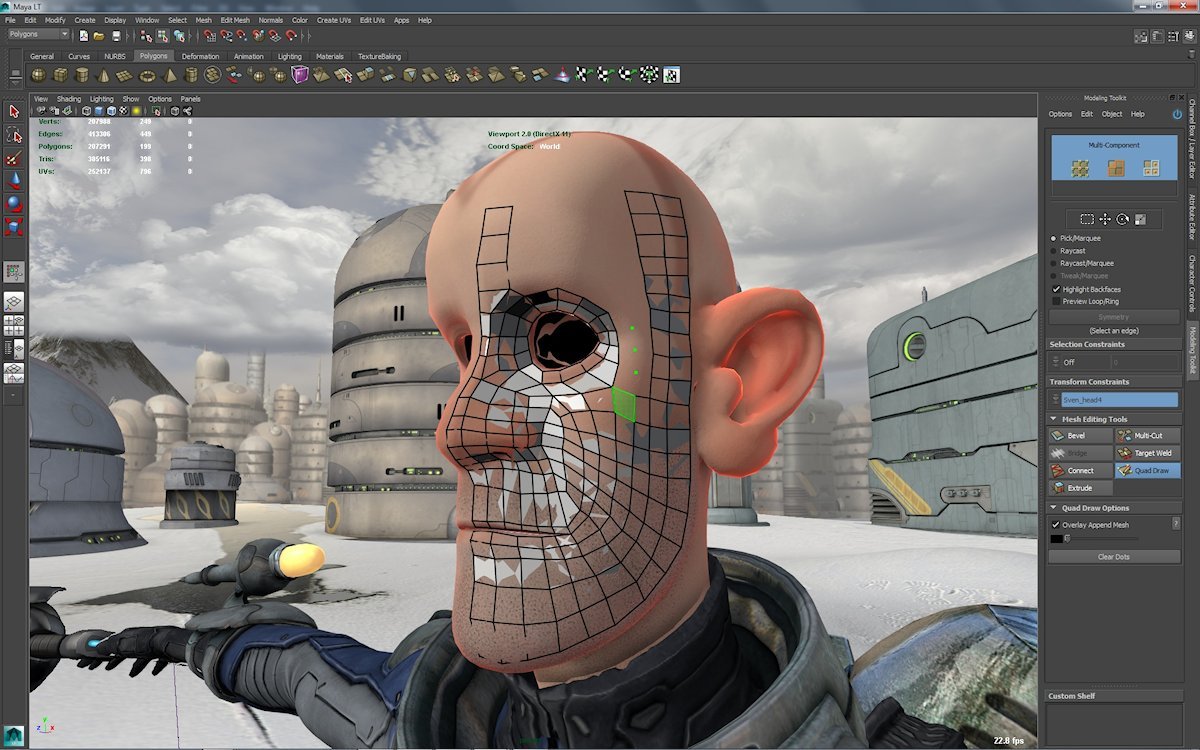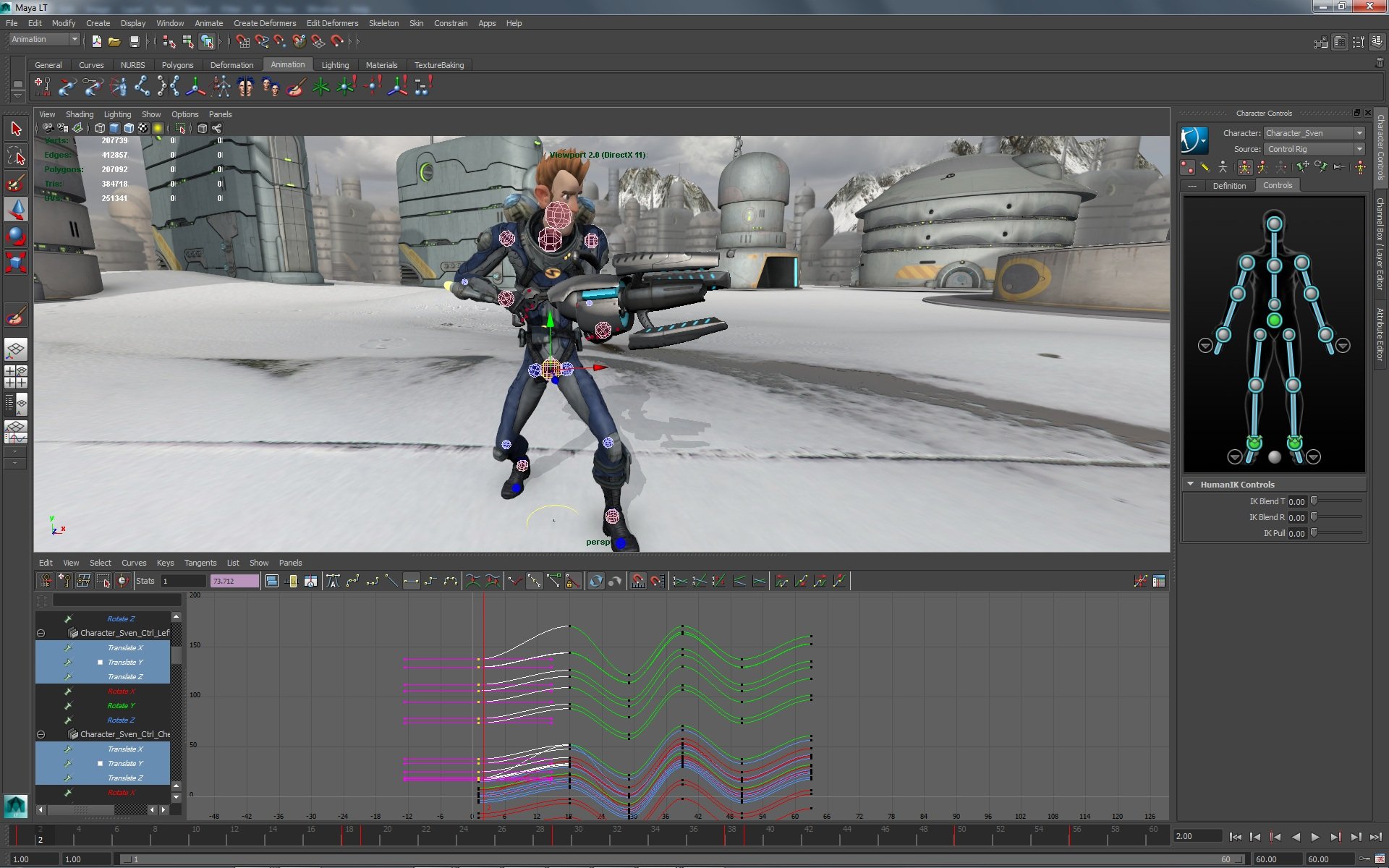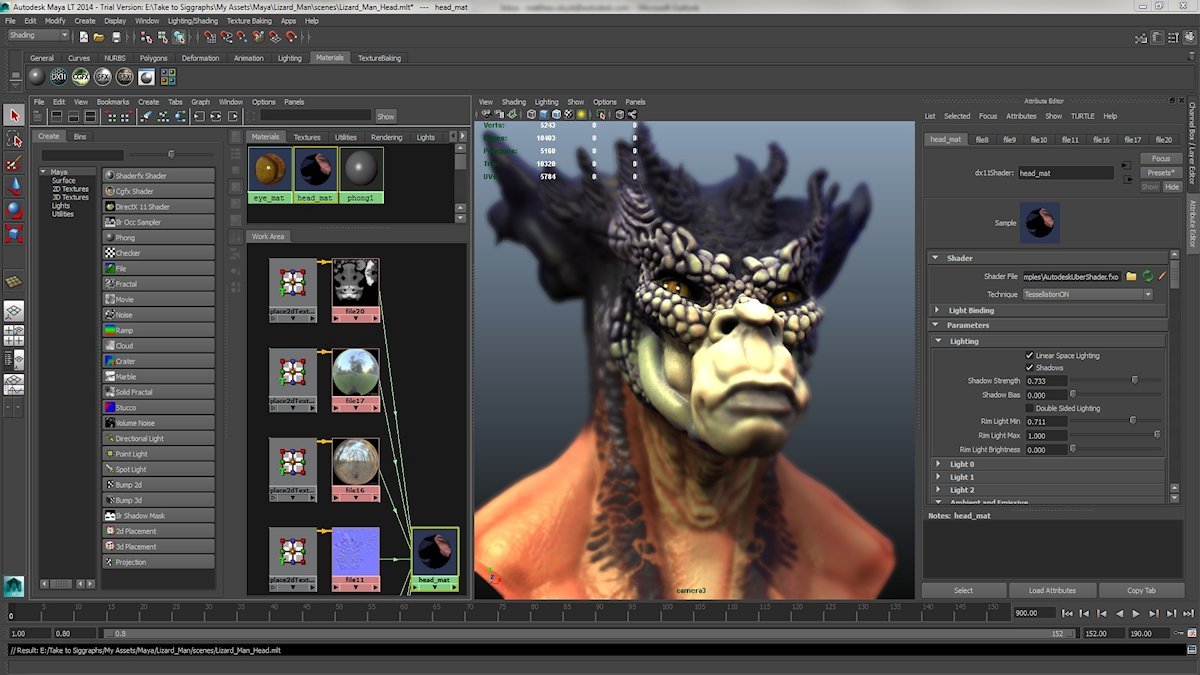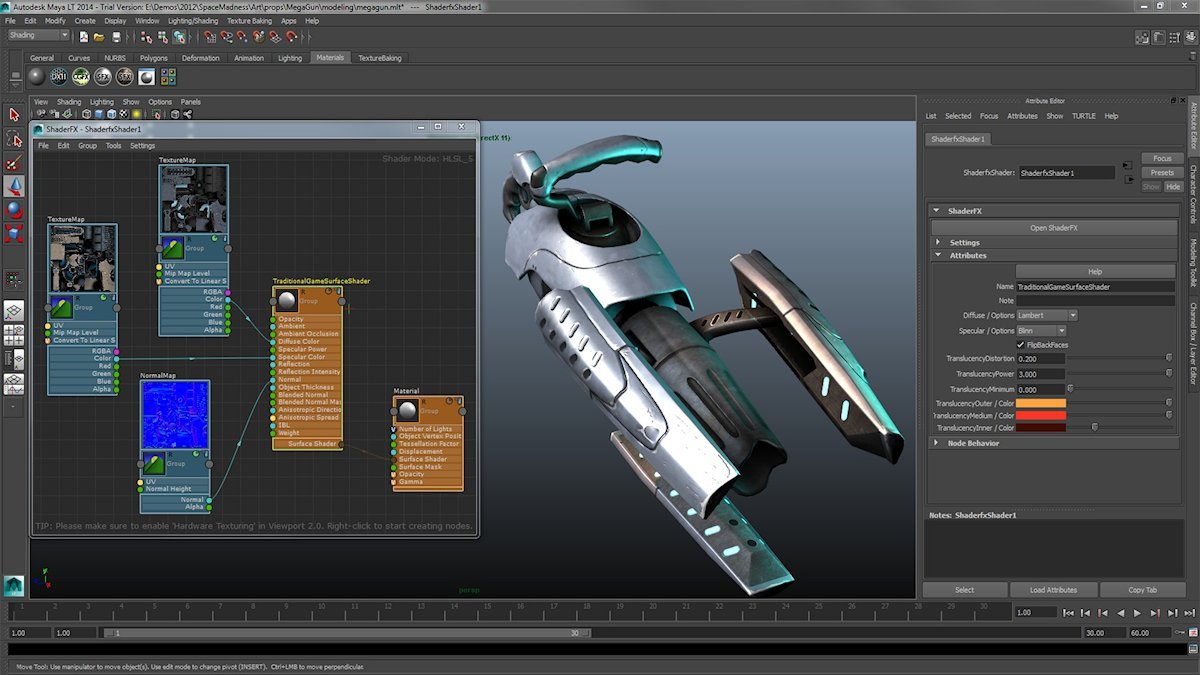Autodesk releases Maya LT 3D modeling tool for mobile and indie game makers

Autodesk creates a wide range of products, from consumer-oriented Windows 8 apps like Sketchbook Express all the way to enterprise-level programs such as Maya 3D. The latter is used by movie makers, advertisers, and even gaming professionals to create 3D art and animations. But as mobile and indie game development has been on the rise, Maya 3D has sometimes proven too costly for smaller developers to use.
Enter Autodesk Maya LT 2014. Inspired by Maya 3D but streamlined for the needs of small game developers, Maya LT should potentially make it far easier for Windows 8 and Windows Phone 8 developers to create 3D assets and scale them across platforms. It’s also far more affordable than Maya 3D. Full details and trailer after the break!
Features
Like its big brother, Maya LT is used to create 3D models, animation, and environments. The difference with LT is the feature set and UI have been designed specifically for game development. Parts of Maya 3D that game developers would never use are gone, freeing up the screen of clutter.
Features that game developers use all the time have been brought to the forefront instead of being buried under layers of menus. Plugins and scripting won’t be supported either – everything is meant to be simple but powerful.
Animation: Maya LT includes a bipedal skeleton generator and Autodesk HumanIK, the company’s popular animation tool.
Lighting and Textures: Mobile developers will especially benefit from Maya LT’s texture baking support. Texture baking precomputes lighting and imitates it in textures for the model. This allows developers to simply look up a baked texture rather than recomputing lighting and shading – a big time and resource saver.
Shaders: Maya LT’s Shader FX tool allows artists to create shaders without the need to learn a shader language. The shader definition can then be exported into cross-platform formats. Other users with the same shader definition will be able to view assets just as they would appear in the game. This eliminates the need to test a shaded asset in the game engine, cutting down on testing time.
Get the Windows Central Newsletter
All the latest news, reviews, and guides for Windows and Xbox diehards.
Polygon reduction: When developing a multiplatform game, developers often need to create complex 3D models and then reduce the models’ polygons for lower powered platforms like smartphones. Maya LT has built-in polygon reduction, so a model created for a Windows 8 game can easily be downsized for use on Windows RT or Windows Phone 8 with no extra work.
Formats

Maya LT can import from various 3D formats, including Maya (MA, MB), MLT, OBJ, FBX, AI, EPS and texture formats (BMP, PNG, DDS, EXR, TGA, TIFF).
It can save and export to two formats. The first is MLT, a proprietary format which contains all of the data and detail associated with a model, much like PhotoShop’s PSD format. The second is FBX, the same type of file that FBX Review for Windows 8 is designed to view.
The FBX format stores 3D data, textures, and animation. It’s already supported in several multiplatform engines like Unity and Unreal Engine, so Maya LT users can export to those engines with no extra work. Developers using their own proprietary engines can request the SDK to add FBX support as well.
Maya LT models exported in the FBX format are capped at 25,000 polygons. That limit is well within the needs of mobile and tablet developers, though it could prove small for retail game development. It’s still perfect for downloadable Xbox One and XBLA games, however.
Pricing

Now for the big question: how much does it cost? Maya 3D’s starting license of $3700 would probably be too high for smaller game makers. A perpetual Maya LT license costs quite a bit less at $795.
Rental licenses will also be launching soon. The rental pricing:
- Monthly: $50 per month
- Quarterly: $142 per quarter ($42 per month)
- Annual: $400 ($35 per month)
In game development, team sizes fluctuate all the time. The rental option allows studios to pay for Maya LT only as they need it. Rental licenses will still benefit from Maya LT’s more frequent update cycle and forum access. Autodesk promises direct interaction with the Maya LT development team through the forums, so users can potentially help prioritize features in future updates.
Time to create

Do we have any game developers in the house who’d like to work with Maya LT? If so, leave us a comment and be sure to visit the Maya LT website for more details.
Paul Acevedo is the Games Editor at Windows Central. A lifelong gamer, he has written about videogames for over 15 years and reviewed over 350 games for our site. Follow him on Twitter @PaulRAcevedo. Don’t hate. Appreciate!

